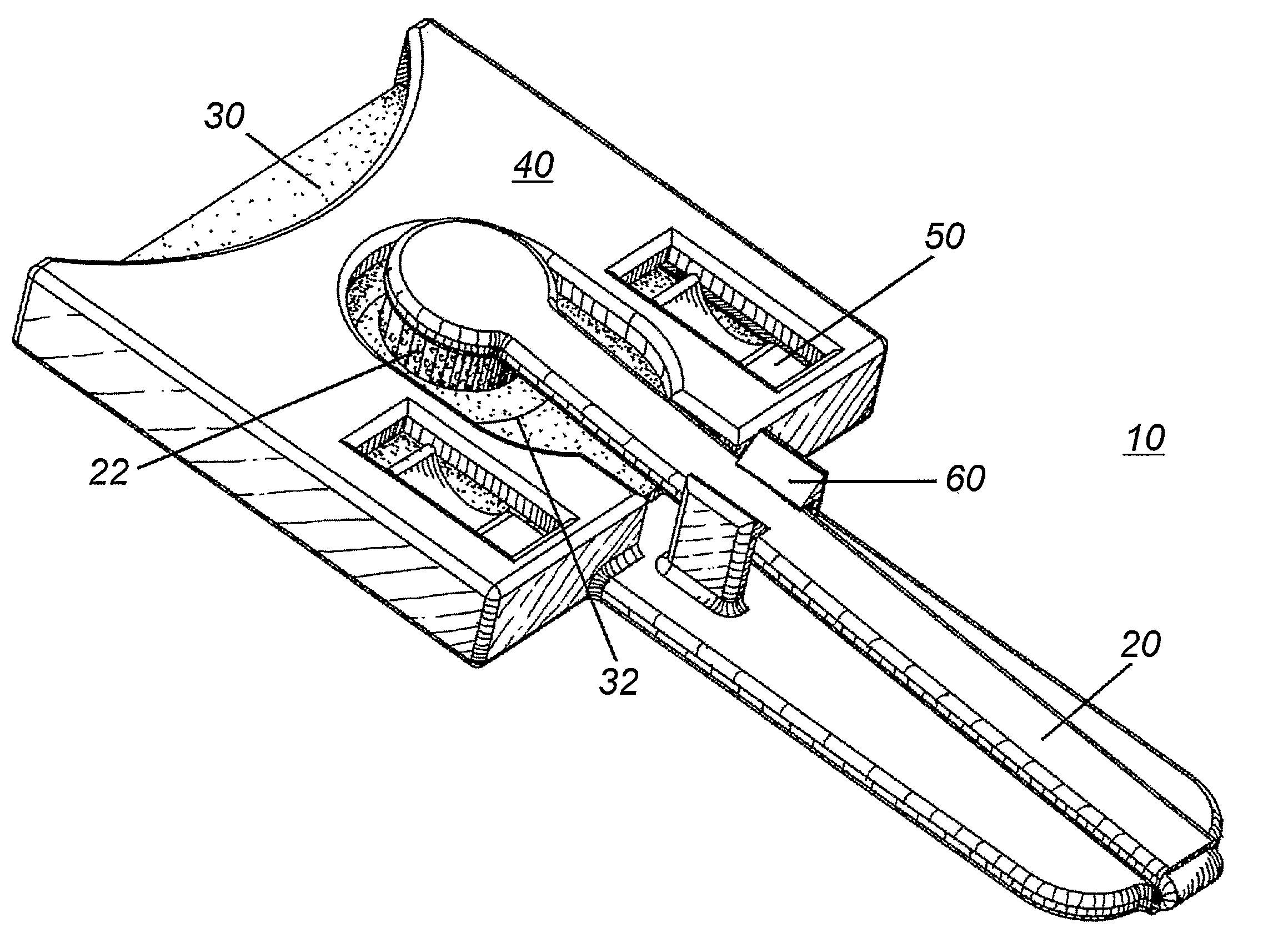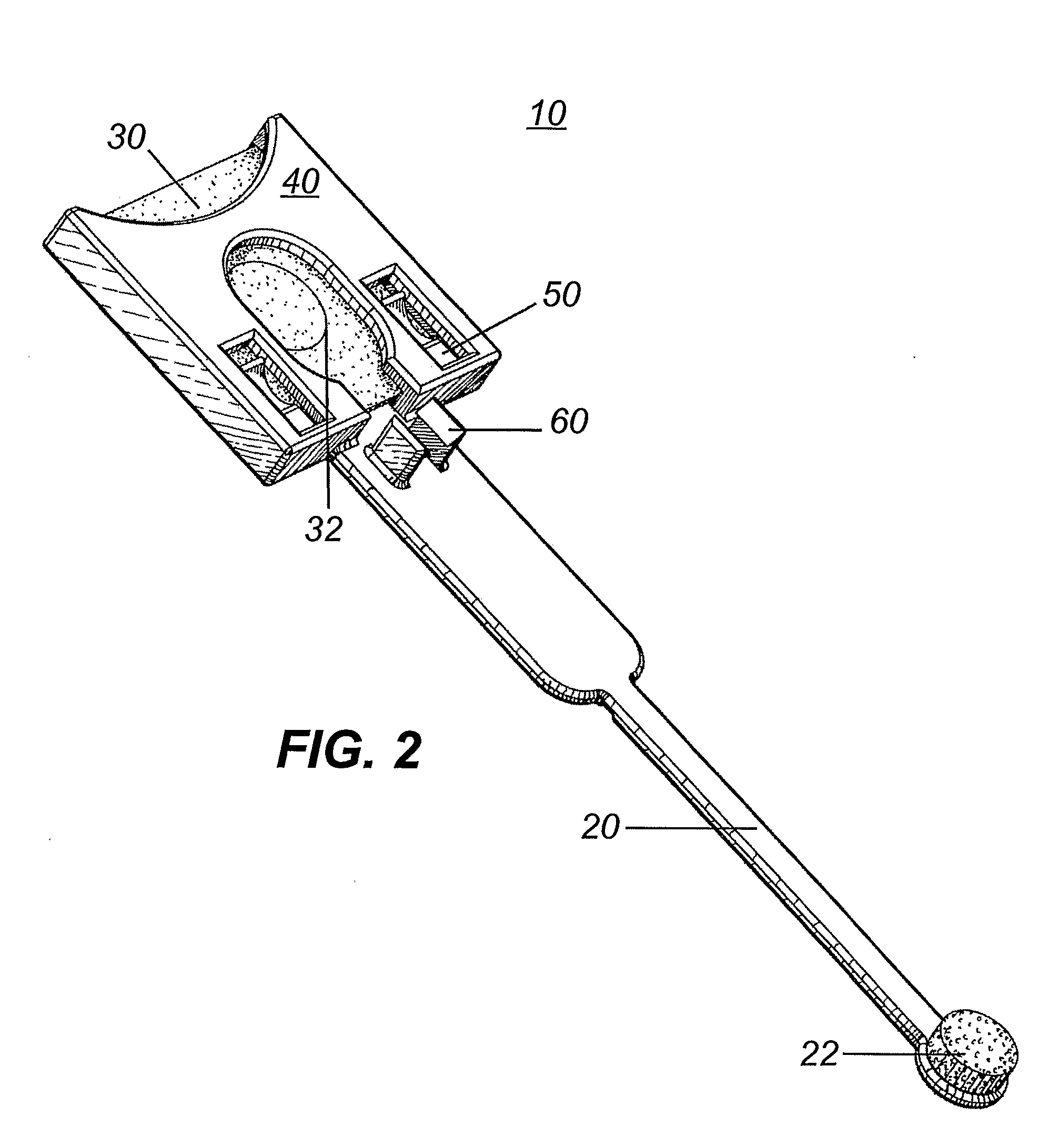Controlled transfer biological sample collection devices and methods of using such devices
a biological sample and collection device technology, applied in the field of controlled transfer biological collection devices, can solve the problems of requiring time-consuming, labor-intensive extraction methods, new set of problems, and non-invasive methods, and achieve the effect of simple safe method and easy isolation of dna
- Summary
- Abstract
- Description
- Claims
- Application Information
AI Technical Summary
Benefits of technology
Problems solved by technology
Method used
Image
Examples
example 1
Cell Transfer Assays
[0052]Cell transfer assays were performed in order to evaluate the transfer efficiency of the device of the present invention. The device used in each of these experiments was a device as illustrated in FIG. 5. The analyte collection surface was formed from foam (Aquazone® available from Reilly Foam Corporation, PA, USA) and the storage medium comprised FTA filter paper (obtained from Whatman, Inc., New Jersey, USA).
[0053]THP-1 cultures were grown to densities of 106 cells / ml, centrifuged and subsequently resuspended at a concentration of 107 cells / ml. A serial dilution of this stock was performed to give concentrations of 105, 104 and 103 cells / ml. Each of these dilutions was applied to the foam collection surface of a device according to the present invention (100 μl each); the devices were then closed and clipped in place for 10 seconds before release of the applicator foam to the resting position.
[0054]2 mm discs were punched from the white application area o...
example 2
Buccal Cell Mapping Experiments
[0057]Samples were collected from four subjects, each using two devices as illustrated in FIG. 5. The samples were collected according to the following protocol:
a) Holding the plastic stem above the hinge joint, the foam tip of the device was placed in the mouth of the subject and the foam analyte collection surface was rubbed on the inside of the cheek for 15 seconds. This procedure was repeated using the opposite cheek. The foam analyte surface was rubbed along the gum-line, at the fold line of the cheek and under the tongue, soaking up as much saliva as possible. The foam analyte surface was then removed from the mouth.
b) The protective film of the storage medium was removed, exposing the FTA Card storage medium.
c) The device was folded at the hinge joint and the foam analyte surface was pressed onto the FTA Card making sure that the foam sample collection surface was held in place by the clip at the front of the FTA Card holder. The device was then...
example 3
STR Analysis
[0065]Buccal samples utilized for STR analysis were taken from the same collection devices in Example 2 above. Two 1.2 mm punches were collected from central locations of each Indicating FTA card storage medium. All punches were washed and dried following the protocol outlined in Example 1.
[0066]STR analysis was performed using the Promega PowerPlex 16® system following the manufacturer's instructions. A processed and dried Indicating FTA punch was used in each PCR reaction as a method of direct amplification from the punch. PCR was carried out on an Applied Biosystems 7900HT, and PCR products were visualized on an Applied Biosystems 310 Genetic Analyzer. Analysis of products was carried out with GeneMapper 3.2® software.
[0067]All 4 sets of buccal collection produced excellent quality results for all 16 alleles above 250 RFU's (relative fluorescent units) as seen in FIG. 10. This exceeds the desired criterion from the Design Input document of 200 RFU's. Although, there w...
PUM
 Login to View More
Login to View More Abstract
Description
Claims
Application Information
 Login to View More
Login to View More - R&D
- Intellectual Property
- Life Sciences
- Materials
- Tech Scout
- Unparalleled Data Quality
- Higher Quality Content
- 60% Fewer Hallucinations
Browse by: Latest US Patents, China's latest patents, Technical Efficacy Thesaurus, Application Domain, Technology Topic, Popular Technical Reports.
© 2025 PatSnap. All rights reserved.Legal|Privacy policy|Modern Slavery Act Transparency Statement|Sitemap|About US| Contact US: help@patsnap.com



